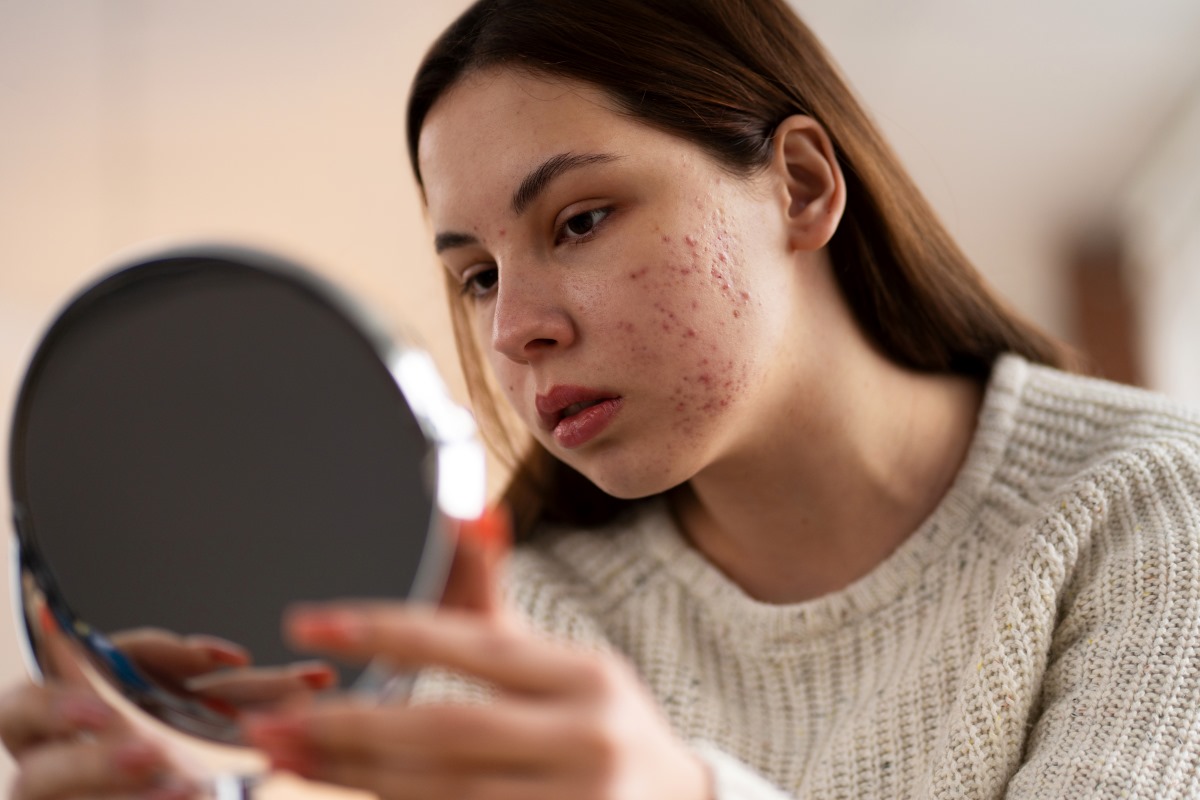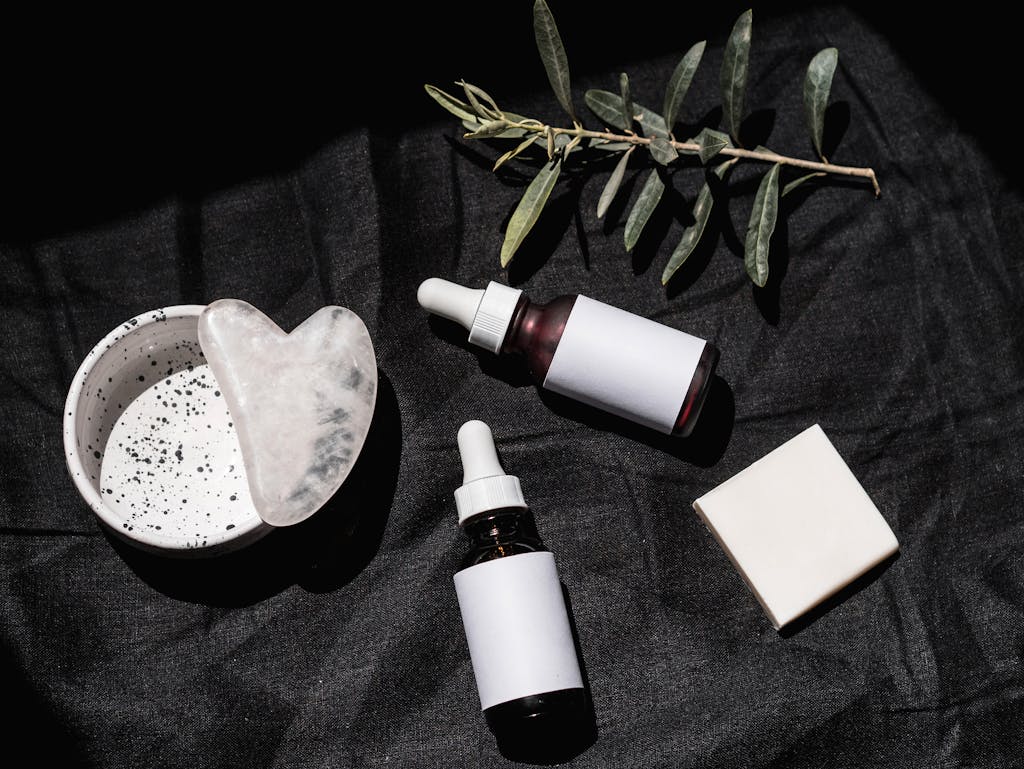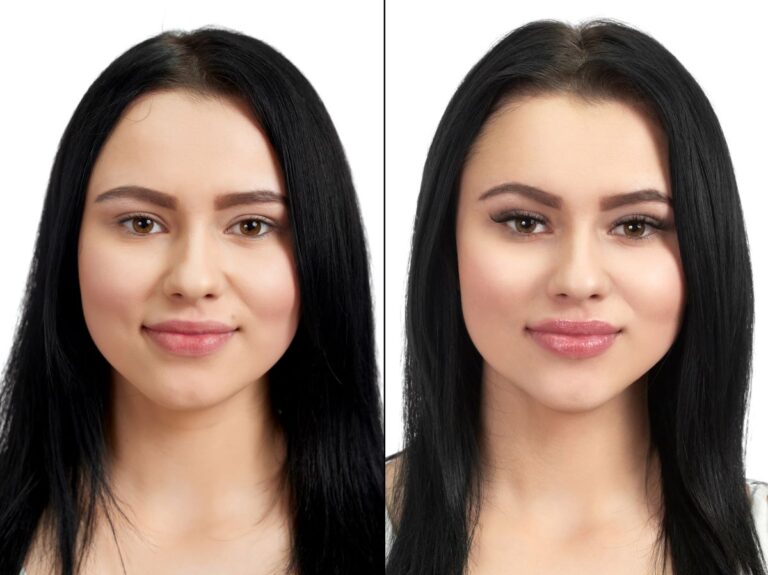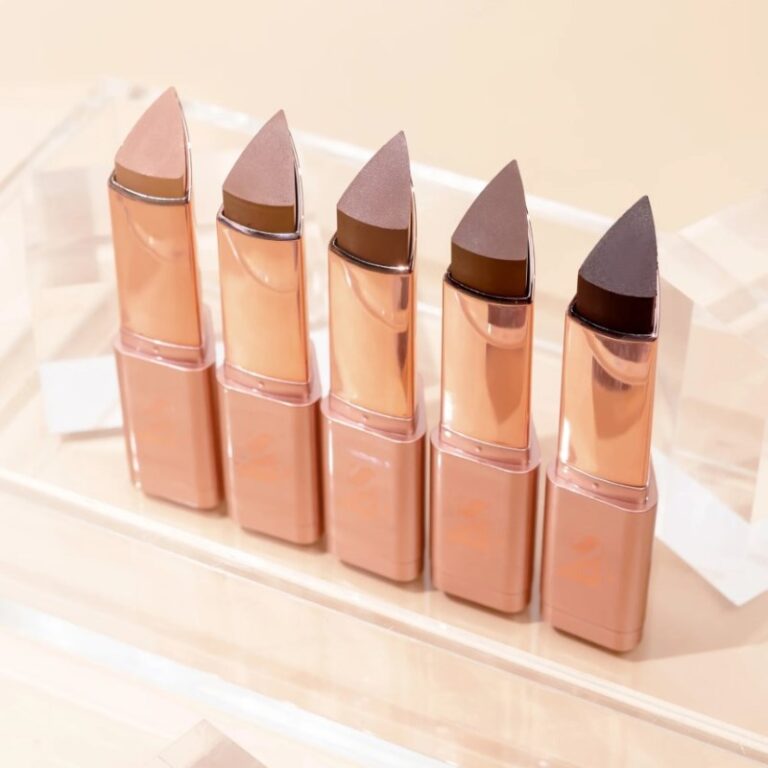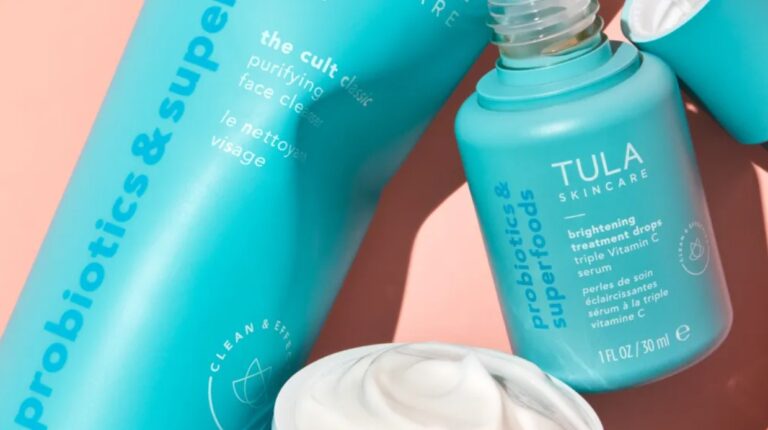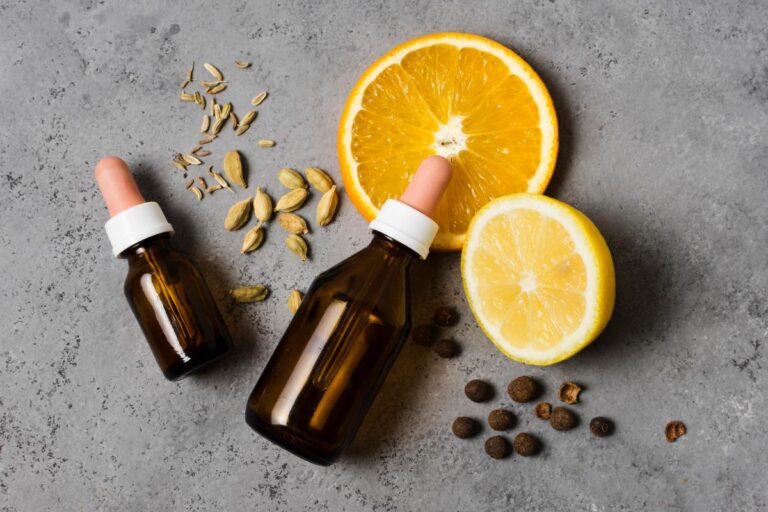How to Tell if Acne Is Hormonal or Bacterial: A Clear Path to Clearer Skin
Acne can affect people of all ages, often causing frustration and impacting self-esteem. But did you know how to tell if acne is hormonal or bacterial? Each type has distinct characteristics that necessitate unique treatment options.
Figure out how to tell if your acne is hormonal or bacterial, explore the underlying causes, and provide the best five remedies for every kind, try PanOxyl Acne Foaming Wash, Paula’s Choice Treatment, Bio-Oil Skincare Body Oil, THE ORDINARY, and La Roche-Posay Acne Treatment.
Hormonal Acne: Exploring 5 Typical Causes
Hormonal acne primarily affects a wide range of ages, but especially adults who are closely linked to hormone level changes. Although men can experience it too, it is more common in women. Hormone fluctuations can raise the production of unwanted oil, which can cause breakouts and clogged pores to become inflamed. Finding effective therapies will undoubtedly be aided by knowing the link between “hormones acne.”
Why Hormonal Acne Occurs
Oftenly triggered by changes in one’s hormone levels, particularly testosterone or other androgen. These fluctuations may occur during various stages of life – pregnancy, climacteric (menopause), menstrual cycle and physiological events, like stress or disorders:
1. Menstrual Cycle
Hormonal variations during the both young and mid-age women’s menstrual cycle result in an increase in acne. Breakouts are most common in the days leading up to menstruation.
2 Pregnancy
Pregnancy causes the body to create more hormones that stimulate the oil glands, which increases the risk of blocked pores and outbreaks. These hormonal changes can cause acne to start or worsen.
3. Menopause
As women approach menopause, hormone levels fluctuate dramatically, leading to a range of skin changes, including the appearance of acne.
4. PCOS
The illness known as Polycystic Ovary Syndrome is caused by an imbalance in the female sex hormones. This imbalance boosts the levels of androgen and leads to irregular menstrual cycles, acne, and other related problems.
5. Stress
The body’s response to stress, which includes higher cortisol production, can intensify oil secretion and acne.
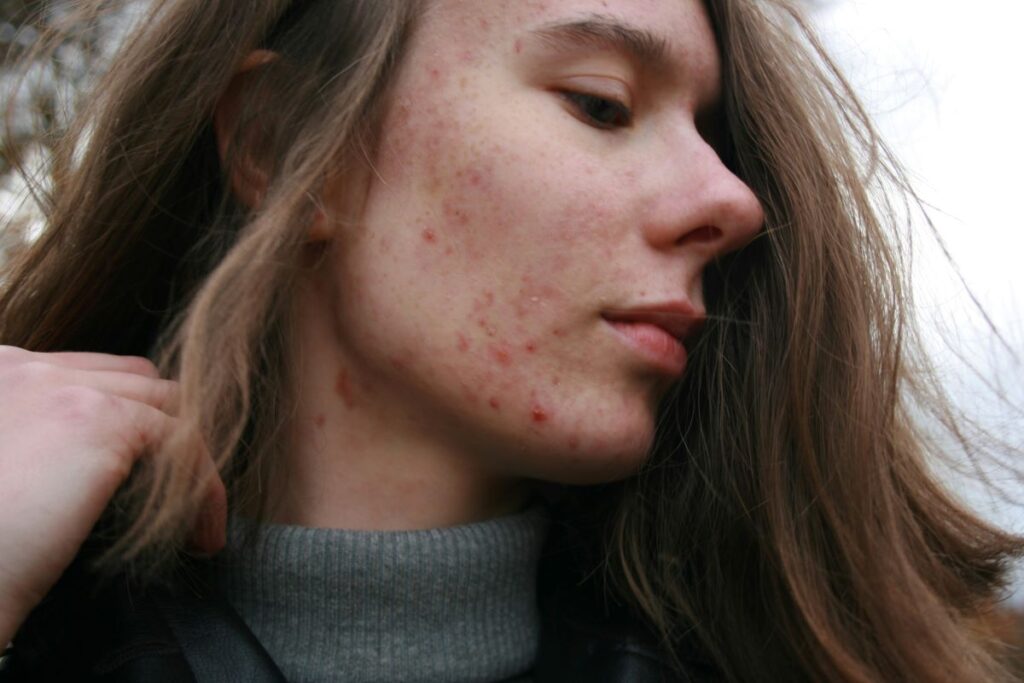
Bacterial Acne: Exploring 4 Typical Causes
Acne vulgaris, another name for bacterial acne, is mostly brought on by bacteria growing in the skin’s pores. Though people of any age can be affected, adolescents are the most common age group to experience this ailment. Propionibacterium acnes naturally reside on the skin but can cause bacterial acne when overgrown, unlike the hormone-driven hormonal acne.
Why Bacterial Acne Occurs
To ascertain whether your acne is bacterial, you need to understand the specific conditions that give rise to this kind of acne. For instance, bacterial acne develops when certain requirements are satisfied by a confluence of events. Here’s how to tell if acne is hormonal or bacterial, and by looking at symptoms like pores conditions, level of oil production, and bacteria existence, and inflammation — you can conclude that your acne is a bacterial one.
1. Bacterial Overgrowth
P. acnes, a typically benign bacteria, can grow quickly when confined in closed pores. Acne redness and swelling are a result of inflammation brought on by chemicals produced by bacteria.
2. Inflammation
The inflammatory response from the body’s immune system to bacterial infection results in pimples, pustules, and occasionally more profound cystic acne.
3. Excess Oil Production
Sebaceous glands secrete sebum, an oily substance that keeps the skin moisturized and protected. When these glands produce too much oil, it can lead to clogged pores.
4. Clogged Pores
Unshed dead skin cells can build up and combine with sebum to create a clog in the hair follicles. This gives bacteria the ideal environment in which to grow.
Recognizing the Differences: Hormonal VS Bacterial Acne
Treatment and management of acne require an understanding How to Tell if Acne Is Hormonal or Bacterial. Different characteristics, genesis, and care are displayed by every kind. People may more accurately know how to tell if acne is hormonal or bacterial, identify their condition, and choose the most effective treatment options by knowing about the characteristics, distinctions, and available treatments for each type of acne.
1. Key Hormonal Acne Characteristics
- Widely spread on the lower part of the face, including the cheeks/jawline/chin, and neck. This distribution pattern is often linked to hormonal fluctuations.
- Often flares up in a cyclical pattern, particularly in women. Breakouts may occur around the menstrual cycle/pregnancy/menopause. These fluctuations in hormone levels trigger increased oil production.
- Commonly manifests as painful, inflamed deep, cystic lesions. These cysts form under the skin and can be stubborn, often taking longer to heal compared to other types of acne.
- May be accompanied by irregular menstrual cycles, hirsutism (excessive hair growth), and weight fluctuations, particularly in conditions like PCOS, or other signs of imbalance.
2. Key Bacterial Acne Characteristics
- Can appear anywhere – face or body, but the most widely spread areas are forehead/nose/back. Unlike hormonal acne, its distribution is not limited to specific areas.
- Does not follow a cyclical pattern. Breakouts can occur at any time, oftenly triggered by poor hygiene, sweating, especially excessive, and the use of comedogenic (pore-clogging) skincare products.
- Presents with a variety of lesions: inflamed whiteheads, or blackheads, or papules, or pustules, or nodules, and cysts. These lesions are accompanied by redness and even swelling.
- Bacterial acne predominantly involves the inflammation/infection of hair follicles and sebaceous glands, with no systemic symptoms present, unlike the hormonal imbalance signs seen in hormonal acne.
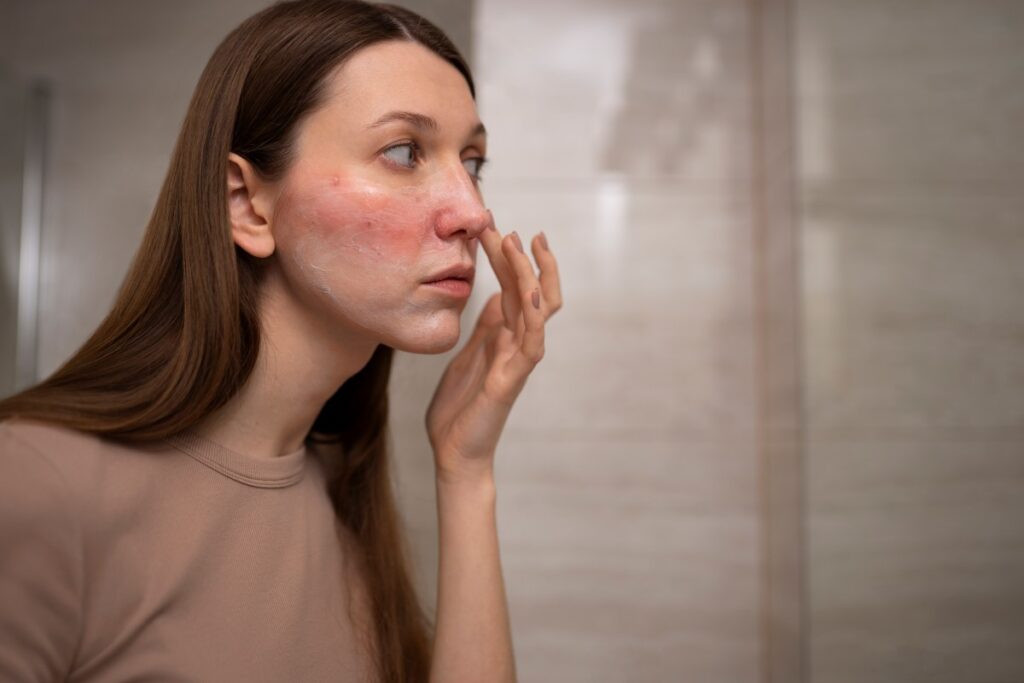
3. Differentiating Factors
- Underlying Causes:
- Hormonal Acne: Caused by changes in hormone levels, especially those of the androgens, which cause an increase in oil production and clogged pores.
- Bacterial Acne: Caused by Propionibacterium acnes (P. acnes) bacteria growing out of control inside the clogged pores, which leads to irritation and infection.
- Age and Gender:
- Hormonal Acne: More prevalent in adult women, especially in those experiencing hormone imbalances or going through periods, pregnancy, or menopause.
- Bacterial Acne: Both sexes are affected; because of increased sebum production throughout adolescence, it is more common during this time but can also last into adulthood.
- Treatment Approaches:
- Hormonal Acne: Frequently necessitates hormonal imbalance-addressing therapies, such as anti-androgen drugs, oral contraceptives, and lifestyle modifications meant to balance hormone levels.
- Bacterial Acne: Treated using antibacterial medications to lessen bacterial development and clear clogged pores, such as benzoyl peroxide, salicylic acid, and topical or oral antibiotics.
Main Treatments Guide for Hormonal Acne Skin
Hormonal acne requires a targeted approach to address the underlying hormonal imbalances that contribute to its development. Effective treatment involves a combination of medical interventions, skincare routines, and lifestyle adjustments. Here are the main treatments for managing hormonal acne:
1. Medical Treatments
- Oral Contraceptives
- Anti-Androgen Medications
- Topical Retinoids
- Topical Anti-Androgen Treatments
2. Lifestyle Adjustments
- Dietary Changes
- Stress Management
- Sleep Hygiene
3. Skincare Routine
- Gentle Cleansing
- Moisturizing
- Sun Protection
- Spot Treatments
4. Professional Treatments
- Chemical Peels
- Laser and Light Therapy
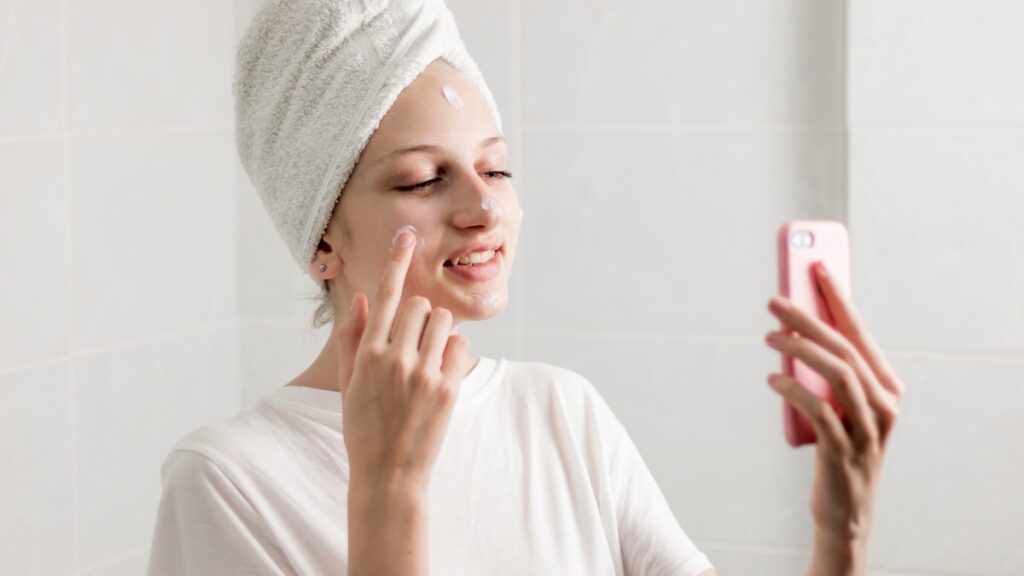
Main Treatments Guide for Bacterial Acne Skin
Effectively treating bacterial acne involves reducing bacterial growth, managing inflammation, and preventing clogged pores. Here are the main treatments used to combat bacterial acne:
1. Topical Treatments
- Benzoyl Peroxide
- Topical Antibiotics
- Topical Retinoids
- Salicylic Acid
2. Oral Medications
- Oral Antibiotics
- Oral Isotretinoin
3. Skincare Routine
- Gentle Cleansing
- Moisturizing
- Sun Protection
4. Professional Treatments
- Chemical Peels
- Laser and Light Therapy
Top 5 Effective Products for Hormonal and Bacterial Acne Skin Issues
1. PanOxyl Acne Foaming Wash
As the #1 best-selling acne wash in the U.S., PanOxyl Acne Foaming Wash is a dermatologist-recommended powerhouse for daily acne treatment. Featuring a maximum strength 10% benzoyl peroxide, this cleanser effectively unclogs pores on the face, chest, and back while helping to prevent and clear breakouts.
It’s formulated with moisturizers to combat dryness, ensuring your skin remains hydrated. Non-comedogenic and unscented, this multi-use, antimicrobial facial wash is safe for daily use and won’t clog pores, making it a reliable choice for tackling even the most stubborn acne. Trust PanOxyl, the Acne Authority™, for clear, healthy skin.
PanOxyl Acne Foaming Wash has garnered significant praise for its effectiveness, particularly in addressing severe acne and body odor issues. Users have found it to be a powerful, versatile solution, especially for persistent acne and as a complementary treatment for body odor, particularly in the underarms. Its high concentration of benzoyl peroxide, coupled with its non-comedogenic and moisturizing properties, makes it a robust option for many individuals seeking clearer skin and odor control.

2. Paula’s Choice CLEAR Regular Strength Daily Skin Clearing Treatment
This powerful yet gentle treatment features 2.5% benzoyl peroxide to effectively target acne-causing bacteria and combat breakouts. The weightless, oil-free gel formula not only tackles existing pimples but also helps prevent future ones. Infused with bisabolol and allantoin, it reduces visible signs of sensitivity, irritation, and redness while minimizing dryness and flaking. Ideal for daily use, this treatment provides a calming, plant-derived blend to keep your skin clear and balanced.
Paula’s Choice CLEAR Regular Strength Daily Skin Clearing Treatment has received positive feedback for its effectiveness in improving acne-prone, sensitive, and dry skin. Users have reported significant improvements in their skin’s clarity and hydration when integrated into a comprehensive skincare routine. The product’s 2.5% benzoyl peroxide content, combined with soothing ingredients like bisabolol and allantoin, helps to combat acne while minimizing irritation and dryness.

3. Bio-Oil Skincare Body Oil
Bio-Oil Skincare Body Oil is a dermatologist-recommended solution designed to improve the appearance of scars, stretch marks, and uneven skin tone. Its blend of natural oils, including Vitamin E, Chamomile, and Lavender, provides soothing and hydrating benefits while locking in essential moisture without clogging pores.
This non-greasy, vegan-friendly formula is suitable for all skin types and textures, making it a versatile addition to both face and body care routines. Bio-Oil is also cruelty-free, paraben-free, and environmentally friendly, ensuring a skin-friendly and planet-conscious choice.
Bio-Oil Skincare Body Oil has a mixed reputation among users. Many appreciate its ability to help fade dark spots and improve the appearance of scars and uneven skin tone over time, especially when used consistently. It is praised for its soothing properties, particularly for post-shaving care and managing ingrown hairs.

4. THE ORDINARY Hyaluronic Acid 2% + B5
THE ORDINARY Hyaluronic Acid 2% + B5 delivers instant plumping hydration to create softer, smoother, and healthier-looking skin. This lightweight formula enhances the skin’s hydration levels, ensuring all-day moisture retention and improved suppleness. Enriched with Hyaluronic Acid and Vitamin B5, it helps to replump dry, dehydrated skin while minimizing the appearance of fine lines, promoting overall skin elasticity and radiance.
THE ORDINARY Hyaluronic Acid 2% + B5 is well-regarded for its ability to hydrate and plump the skin without causing excess oiliness or irritation, making it a good fit for those with oily or acne-prone skin. Users appreciate its lightweight formula, which complements moisturizers and enhances overall skin hydration without contributing to breakouts.
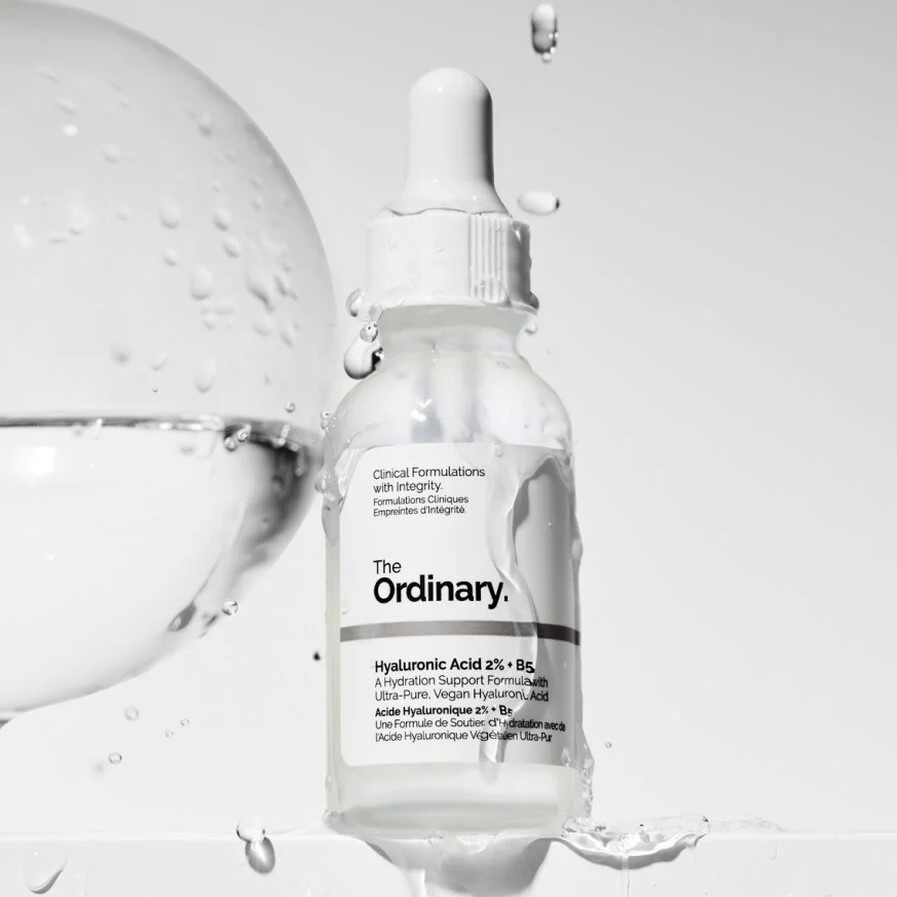
5. La Roche-Posay Effaclar Salicylic Acid Acne Treatment
La Roche-Posay Effaclar Salicylic Acid Acne Treatment is designed to target and clear acne blemishes while helping to prevent new breakouts. This treatment visibly reduces pores, fine lines, and post-acne marks, showing a 21% reduction in whiteheads and blackheads within 4 weeks.
Users report a 77% improvement in the appearance of pores and a 45% reduction in pimples over the same period. Additionally, it helps improve post-acne marks by 49% in just 4 weeks, making it an effective solution for clearer, smoother skin.
La Roche-Posay Effaclar Salicylic Acid Acne Treatment is praised for its effectiveness in addressing acne-related concerns. Many users appreciate its ability to clear blemishes, reduce pore visibility, and improve post-acne marks. Clinical results show notable reductions in whiteheads, blackheads, and pimples, with significant improvements in pore appearance and post-acne marks over a few weeks.
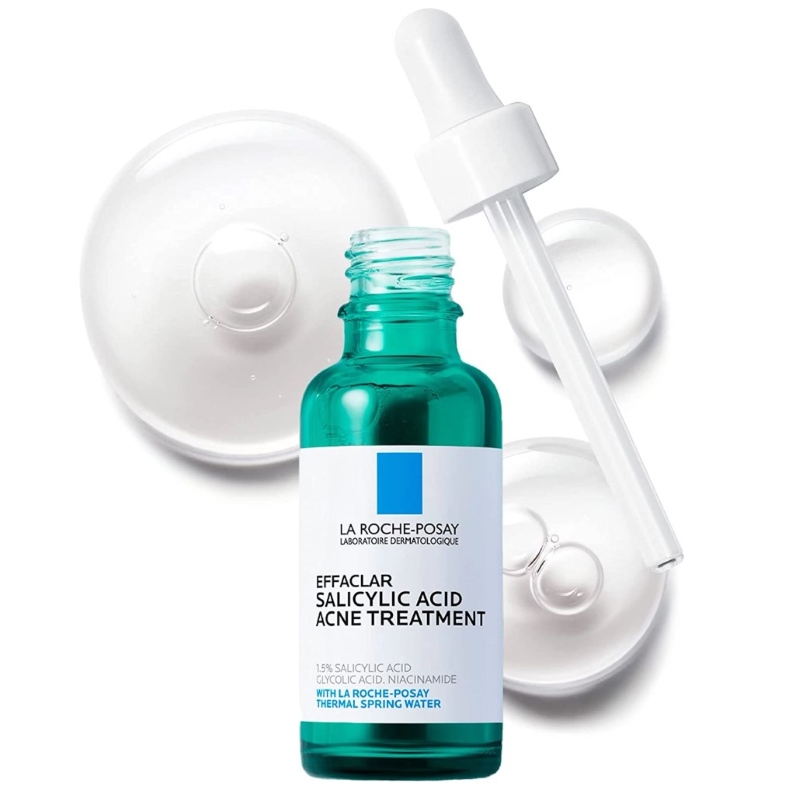
What About Fungal Acne?
Fungal acne, often mistaken for bacterial or hormonal acne, is actually caused by an overgrowth of yeast, specifically Malassezia, on the skin. This condition tends to appear as small, itchy bumps that can be confused with regular acne but are typically more uniform in size and often occur on the forehead, chest, and back. Unlike traditional acne, fungal acne thrives in warm, humid environments and can be exacerbated by heavy, oil-based skincare products.
Treating fungal acne usually involves using antifungal treatments, adjusting your skincare routine to include lighter, non-comedogenic products, and ensuring good skin hygiene to manage yeast levels. Recognizing the difference between fungal acne and other types of breakouts is crucial for effective treatment and achieving clearer skin.
Conclusion
Understanding How to Tell if Acne Is Hormonal or Bacterial is crucial for achieving clearer, healthier skin. By distinguishing between hormonal, bacterial, and even fungal acne, you can tailor your treatment to address the root causes effectively. Hormonal acne often arises from internal imbalances, typically appearing around the jawline and chin, while bacterial acne is driven by external factors and commonly affects areas like the forehead and back.
Understanding these differences helps tailor your skincare routine more effectively, whether you’re focusing on balancing hormones or targeting bacteria. Identifying How to Tell if Acne Is Hormonal or Bacterial, you can choose appropriate treatments and products, leading to more successful management and healthier skin overall.
